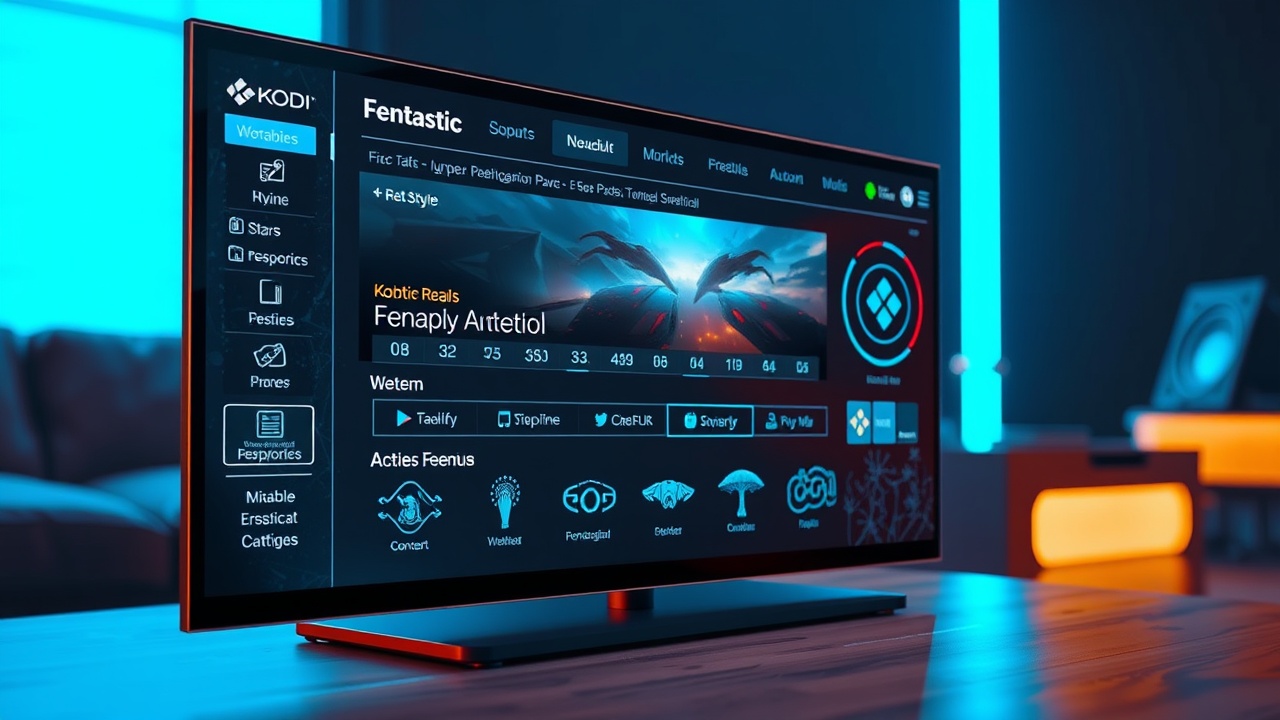Plugbox Linux, commonly referenced through the community-driven website PlugboxLinuxOrg, is a lightweight, streamlined operating system designed for embedded systems and ARM-based devices. Leveraging the power of Arch Linux principles, Plugbox Linux caters specifically to developers and tech enthusiasts looking for a Linux distribution optimized for embedded hardware. This niche yet highly flexible OS stands out for its simplicity, performance, and adaptability, making it a compelling option for those in the field of embedded systems and IoT (Internet of Things) development.
What is Plugbox Linux?
Plugbox Linux is a specialized, stripped-down version of Linux originally inspired by Arch Linux. While Arch Linux is known for its simplicity, customizability, and DIY approach, Plugbox Linux takes these core principles and optimizes them for embedded systems and ARM-based devices. At its heart, Plugbox Linux aims to offer a powerful, minimalistic operating system that can run effectively on limited resources, making it ideal for compact hardware like Raspberry Pi, BeagleBone, and other ARM-powered boards.
The Origin and Mission of PlugboxLinuxOrg
PlugboxLinuxOrg is an open-source community hub dedicated to the distribution, support, and documentation of Plugbox Linux. The goal is to empower developers, enthusiasts, and engineers with a streamlined OS for small-scale embedded systems. By offering a lightweight yet powerful OS, PlugboxLinuxOrg seeks to bridge the gap between ease of use and advanced functionality. The website provides essential resources, including installation guides, FAQs, and forums, to support those implementing Plugbox Linux in their embedded projects.
Why Choose Plugbox Linux for Embedded Systems?
Optimized for ARM Architecture
Plugbox Linux’s main selling point is its optimization for ARM architecture. With the growing prevalence of ARM-based devices in IoT and embedded systems, Plugbox Linux fills a critical role by providing an OS specifically tailored to harness the performance and efficiency of ARM chips.
Simplicity and Customization
Following Arch Linux’s KISS (Keep It Simple, Stupid) principle, Plugbox Linux is minimal by design. This simplicity is advantageous for embedded systems, as it minimizes unnecessary background processes, thereby conserving resources and maximizing efficiency.
Community-Driven Support
The PlugboxLinuxOrg community is robust and helpful, filled with developers who are passionate about Linux and embedded systems. Plugbox Linux users benefit from community support that spans forums, dedicated FAQs, and troubleshooting guides, making it easier for developers to resolve issues quickly and efficiently.
Installing Plugbox Linux: A Step-by-Step Guide
Step 1: Gather Necessary Hardware
To install Plugbox Linux, you’ll need an ARM-compatible device (e.g., Raspberry Pi, BeagleBone), a microSD card (8GB or higher), and a compatible microSD card reader.
Step 2: Download Plugbox Linux Image
Navigate to PlugboxLinuxOrg to download the latest image file. Select the version that matches your specific ARM device to ensure compatibility and performance.
Step 3: Flash the Image to MicroSD Card
Use software like Balena Etcher or Raspberry Pi Imager to flash the Plugbox Linux image onto your microSD card. Insert the card into your computer, open your flashing tool, select the image file, and proceed to flash it onto the card.
Step 4: Insert MicroSD Card into Device and Power On
After the image is flashed, insert the microSD card into your ARM device. Connect it to a power source, and it should boot into Plugbox Linux.
Step 5: Configure the Initial Setup
Once Plugbox Linux boots, configure network settings, user preferences, and any additional packages you need. Plugbox Linux offers a minimal base setup, allowing users to customize the OS as per their requirements.
Key Features of Plugbox Linux
Lightweight Footprint
One of Plugbox Linux’s main features is its minimal system footprint, which is perfect for ARM devices with limited memory and processing power. Its streamlined nature ensures that only essential packages are installed, reducing load times and enhancing responsiveness.
Flexible Package Management
Plugbox Linux employs the Pacman package manager, similar to Arch Linux, for its flexibility and speed. Pacman provides extensive package support, ensuring that users have access to a wide range of software applications and libraries for development purposes.
Security and Stability
Security is paramount in Plugbox Linux, with frequent updates and patches provided by the PlugboxLinuxOrg community. The OS’s lightweight design inherently reduces the attack surface, making it less vulnerable to security threats.
Enhanced Networking Capabilities
Embedded systems often require robust network management. Plugbox Linux comes equipped with essential networking tools and configurations, ensuring stable connectivity, which is crucial for IoT and remote applications.
PlugboxLinuxOrg: A Resource for Embedded Systems Developers
PlugboxLinuxOrg isn’t just a website; it’s a thriving community that provides essential support for Plugbox Linux users. From installation guides to troubleshooting forums, the site is a treasure trove of resources. Users can find in-depth FAQs, community-led tutorials, and code repositories, fostering collaboration and knowledge sharing among developers.
Resource-Rich Documentation
Detailed documentation is available on PlugboxLinuxOrg, covering everything from basic setup instructions to advanced configurations. This documentation is consistently updated by the community, ensuring that users have access to the latest information on Plugbox Linux.
User Forums and Community Support
PlugboxLinuxOrg features a forum where users can share tips, ask questions, and troubleshoot issues together. This interactive community-driven model has cultivated an invaluable support network, helping users implement and maintain Plugbox Linux in their projects.
Getting Started with Development on Plugbox Linux
For developers keen on exploring Plugbox Linux, setting up a development environment is straightforward. By default, Plugbox Linux includes core development libraries, with additional support for popular programming languages like Python, C++, and Node.js, making it versatile for embedded applications.
Developing IoT Solutions with Plugbox Linux
Plugbox Linux’s small footprint and ARM compatibility make it ideal for IoT applications, where memory, processing power, and connectivity are often constrained.
Steps for IoT Development on Plugbox Linux:
- Step 1: Identify the embedded hardware to be used with Plugbox Linux (e.g., sensors, actuators).
- Step 2: Connect the necessary modules and ensure driver compatibility.
- Step 3: Install any required libraries or tools through Pacman or AUR (Arch User Repository) if additional components are needed.
- Step 4: Develop your IoT application, using available libraries to manage device communication and networking.
Frequently Asked Questions
What devices are compatible with Plugbox Linux?
Plugbox Linux is compatible with ARM-based devices, including Raspberry Pi, BeagleBone, and similar embedded platforms commonly used in IoT and embedded systems.
How do I install Plugbox Linux on my device?
To install Plugbox Linux, download the compatible image from PlugboxLinuxOrg, flash it onto a microSD card, insert it into your device, and power it on to boot into the OS.
What makes Plugbox Linux different from other Linux distributions?
Plugbox Linux is optimized for ARM and embedded systems, offering a minimalist design with high customizability. Its lightweight footprint makes it ideal for constrained environments.
Is Plugbox Linux free to use?
Yes, Plugbox Linux is free, open-source software. You can download it from PlugboxLinuxOrg, and the community frequently provides updates and patches.
How can I contribute to the Plugbox Linux community?
You can contribute by sharing knowledge on forums, helping improve documentation, or developing packages and scripts for ARM-based devices compatible with Plugbox Linux.
Conclusion
Plugbox Linux, promoted through the active PlugboxLinuxOrg community, stands as a versatile and lightweight solution for ARM devices and embedded systems. Its streamlined design, community-driven support, and flexibility make it the OS of choice for developers and engineers focused on embedded applications and IoT projects. For anyone looking to delve into ARM development or needing a Linux-based OS with a minimal footprint, Plugbox Linux offers a powerful and highly adaptable platform.







